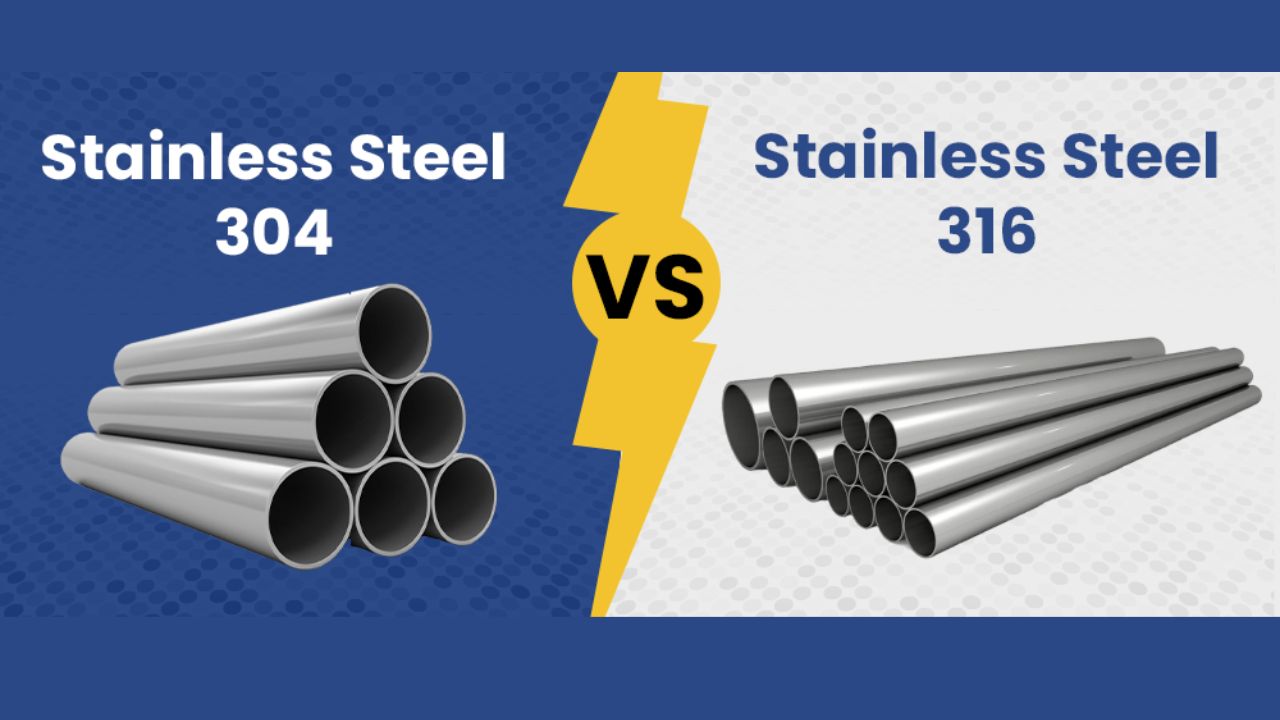Beneficient is a designer of technology products. He has a B.S. in electrical engineering and an M.S. in computer science from Stanford University, and he has worked at several startups, including Google and Facebook. He is the co-founder of Conversion.ai, Proof, and Apptopia.

Stainless steel pipes are subject to two of the most frequently discussed types in terms of Stainless Steel 304 and 316. Although the two are considered strong, they appear and resist corrosion slightly differently. The knowledge of Stainless Steel 304 Vs 316 enables the buyers and engineers to make the correct decision regarding their projects. TUSPIPE, being a reputed company in steel pipe production and having over 20 years in the market, can provide useful information on the difference in performance, use, and price of the two materials.
Knowledge on Stainless Steel 304
The world uses stainless steel 304, which is one of the most popular stainless steel materials. It is also a favorite, as it presents a good compromise of strength, durability, and cost. This type of pipe is usually selected for daily usage that includes indoor structures, kitchen equipment, and ornaments.
The utility of Stainless Steel 304 has to do with its overall anti-rust and anti-staining ability. It can withstand the majority of the weather conditions and indoor settings, and this is the reason why it is still a top go-to choice in terms of construction and home use. Nevertheless, this kind of steel will, during exposure to environments that contain saltwater or dangerous chemicals, exhibit surface rust over time.
The Stainless Steel 304 pipes offered by TUSPIPE are an effective and economical alternative to clients who require quality pipes that would provide outstanding performance in normal environmental conditions. They are well-polished in appearance, can be installed easily, and have a long lifespan.
Knowledge on Stainless Steel 316
On the other hand, Stainless Steel 316 is characterized by great ability to withstand corrosion, particularly in conditions where exposure to chloride or salt is prevalent. It was made as a better replacement for 304, especially in industries like marine, chemical, and food processing.
The difference between Stainless Steel 316 and other materials is that 316 has high endurance in an adverse environment. It is effective in places that are moist, acidic, or hot, and this has made it a favorite in the work along the coastlines, chemical plants, and food quality piping systems. The pipes are not only kept clean and wholesome but also shine in the harsh industrial environment.
The Stainless Steel 316 pipes of TUSPIPE are designed to make them reliable in stressful environments. They suit customers who need a high level of corrosion resistance and stability of performance, even in the presence of constant conditions in the presence of aggressive elements.
Key Differences between Stainless Steel 304 and 316
Stainless Steel 304 and 316 are similar. They are applied differently as they both react to the environmental conditions. The most visible difference is that Stainless Steel 316 works drastically towards the resistance of corrosion caused by salt, moisture, and chemical corrosion. This renders it more marine and industrial-friendly.
Stainless steel 304, on the other hand, is used in a standard environment where there is no need for high resistance to severe chemicals. It is very strong, formable, and shiny, and as such it proves to be suitable in architectural work, interior fittings, and low-corrosion manufacturing systems.
Stainless Steel 316 is comparatively costly than 304 in terms of cost due to its superior protection attributes. Nevertheless, in the case of projects where durability and corrosion protection are essential, this investment is justified by a decrease in maintenance and increased life cycle.
Uses in the Industry
Stainless Steel 304 pipes are extensively applied in construction, furniture, and cooking appliances. This provides both aesthetic value and good performance. On the other hand, Stainless Steel 316 pipes are used in shipbuilding, oil and gas equipment, and also in chemical processing systems. It is because it requires stronger resistance.
The two materials find applications within industries that consider hygiene, durability, and safety. TUSPIPE still provides these materials as per their quality and accuracy, with a promise that every pipe is up to international standards and the demands of the customers.
Conclusion
Lastly, the difference between the Stainless Steel 304 and the 316 pipes is more dependent on the level of corrosion resistance required. Stainless steel 304 is a very good material to use in general-purpose applications where durability, appearance, and cost are given utmost consideration. Stainless Steel 316, on the other hand, is applied in more aggressive conditions such as coastal, chemical, or industrial environments, whereby corrosion resistance is of paramount importance.
TUSPIPE is also determined to assist customers with selecting the appropriate material to use in each project. Having over years of experience in producing high-quality steel pipes, the company is such that every product offers reliability, long service life, and consistent performance. In all types of construction, be it day-to-day or industrial, when the industrial demands are high, TUSPIPE offers the finest stainless steel solutions that can be recognized as attaining the greatest standard of quality and value.
